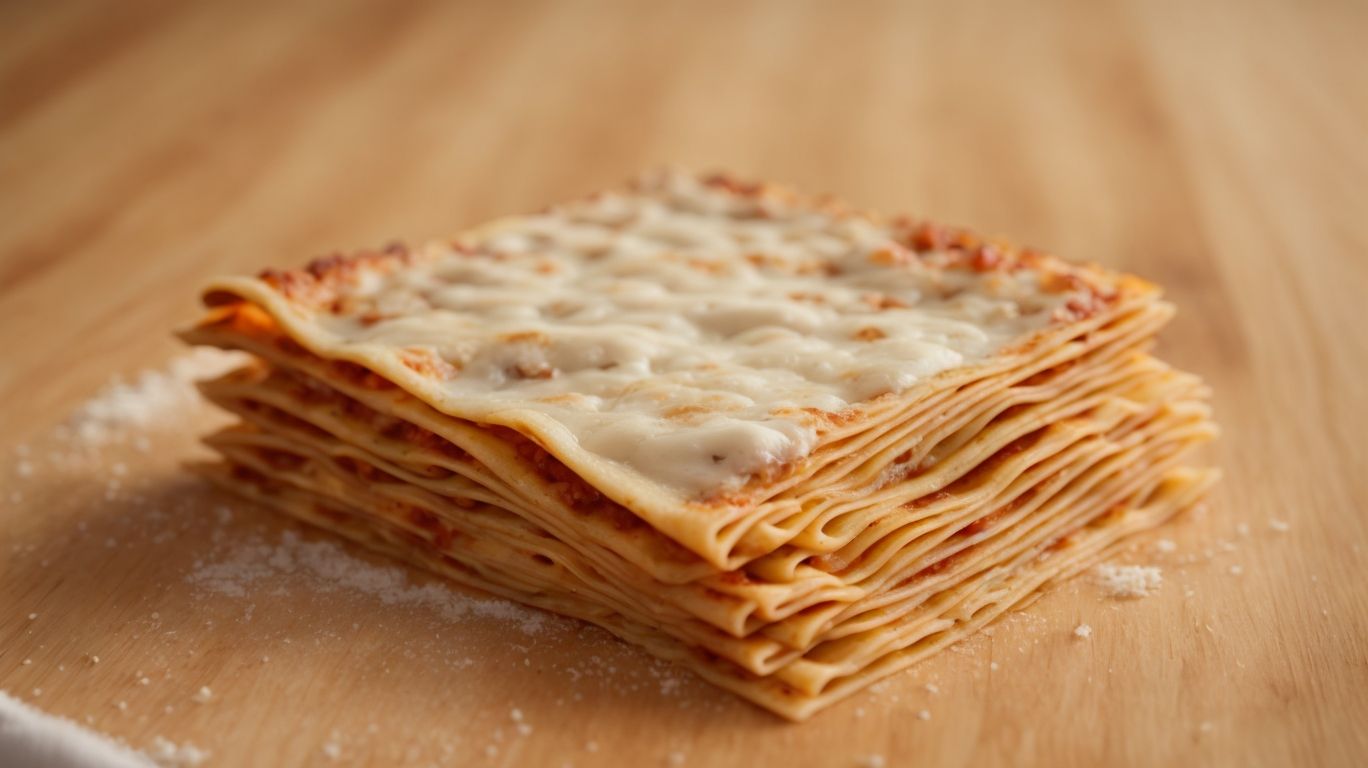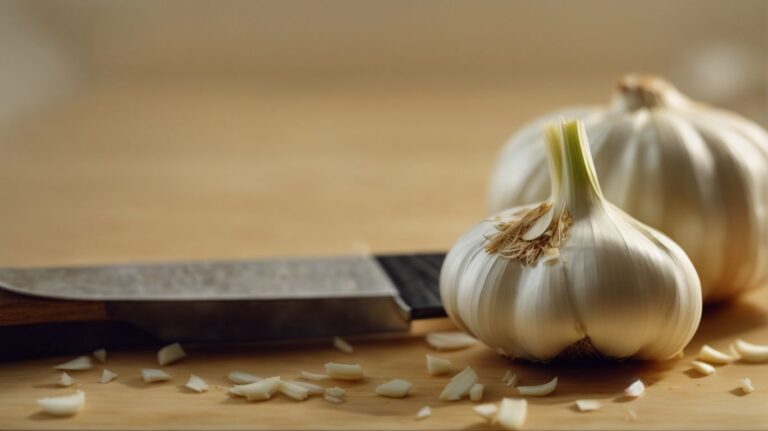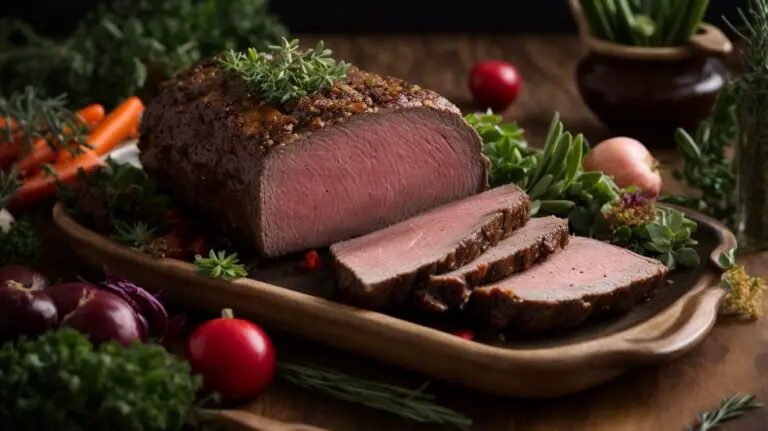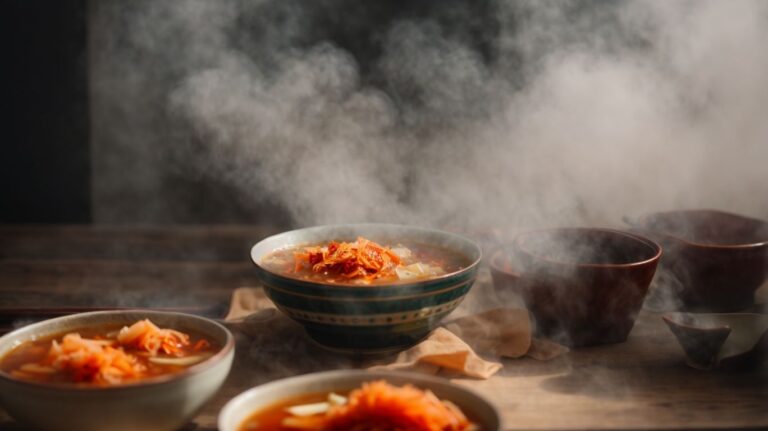How to Cook Lasagna Noodles Without Boiling?
Lasagna noodles are a crucial element of any delicious lasagna dish. But have you ever wondered if boiling them is truly necessary?
We will explore the importance of boiling lasagna noodles, what happens if you skip this step, and alternative methods for cooking them without boiling.
Whether you’re a seasoned chef or a novice in the kitchen, these tips and tricks will help you cook perfect lasagna noodles every time.
Join me, Chris Poormet, as we uncover the secrets to mastering this classic pasta dish.
Key Takeaways:
Why Boiling Lasagna Noodles Is Important?
Boiling lasagna noodles is essential to ensure they are properly cooked and have the right texture for your dish.
Water plays a crucial role in the boiling process, as it hydrates the noodles and activates the starches, resulting in that perfect al dente consistency. Getting the water to a rolling boil before adding the noodles helps prevent them from sticking together.
Remember to generously salt the water for flavor absorption. The key is to cook the noodles until they are just tender yet still firm to the bite, as they will continue to cook further in the oven once layered with sauce and cheese.
What Happens If You Don’t Boil Lasagna Noodles?
If you skip boiling lasagna noodles, they may end up undercooked and affect the overall taste and texture of your lasagna dish.
When preparing lasagna, proper noodle preparation is crucial to ensuring that the layers of pasta cook evenly and become tender, allowing the flavors of the sauce and cheese to meld perfectly. Skipping the boiling step can lead to a final dish with hard, crunchy noodles that disrupt the harmony of the dish.
Boiling the lasagna noodles not only pre-cooks them to the perfect al dente texture but also helps them absorb flavors from the sauce and cheese during baking, resulting in a more flavorful and cohesive lasagna.
How To Cook Lasagna Noodles Without Boiling?
While boiling lasagna noodles is the traditional method, you can try alternative techniques to cook them without boiling for a unique twist on the classic dish.
One creative approach to cooking lasagna noodles without boiling is by utilizing the oven-ready noodles, which absorb moisture from the sauce as the lasagna bakes, resulting in a delicious and hassle-free preparation. Another innovative method involves soaking the noodles in hot water or broth before layering them in the dish, enhancing the flavor profile of the final dish.
Experimenting with different noodle types, such as spinach or whole wheat, can also add a nutritional boost and unique texture to your lasagna creation. Considering these alternatives can elevate your lasagna game and offer a personalized touch to this beloved Italian classic.
Preparing the Noodles
Before cooking lasagna noodles, ensure they are prepared according to the recipe instructions, whether through boiling or alternative methods, and consider using cooking spray to prevent sticking.
Properly cooked lasagna noodles are the foundation of a delicious lasagna dish. To start, bring a large pot of water to a boil, adding salt to season the water. Gently place the noodles into the boiling water, stirring occasionally to prevent clumping. Cook the noodles until they are al dente, typically around 8-10 minutes.
Once the noodles are cooked, drain them in a colander and rinse with cold water to stop the cooking process. Lay the noodles flat on a baking sheet or parchment paper to prevent them from sticking together.
Using a Slow Cooker
Cooking lasagna noodles in a slow cooker offers a convenient and hands-off method that can yield delicious results when following the right recipe and water proportions.
When using a slow cooker to prepare lasagna noodles, it’s important to ensure that the water-to-noodle ratio is balanced to achieve the perfect texture. Too much water can lead to soggy noodles, while too little can result in undercooked pasta.
To begin, fill your slow cooker with enough water to fully submerge the noodles. Make sure the water covers the noodles by at least an inch to allow them room to expand as they cook.
Turn the slow cooker on low heat and add a pinch of salt to the water for flavor. Place the lasagna noodles gently into the slow cooker, ensuring they are fully immersed in the water.
Cook the noodles for about 30-45 minutes, depending on your desired level of doneness. Remember to check on them periodically to avoid overcooking.
Using the Oven
Baking lasagna noodles in the oven can be a convenient and efficient way to cook them for your dish, ensuring proper texture and flavor when following a suitable recipe and water measurements.
When opting for the oven method to prepare lasagna noodles, you eliminate the hassle of constantly monitoring a boiling pot of water on the stovetop. This hands-off approach gives you more flexibility to focus on other elements of your recipe, such as preparing the sauce or assembling the layers of your lasagna.
By using the oven, you can control the moisture content more precisely, ensuring that the noodles are perfectly cooked without being overly soft or too chewy.
One key advantage of baking lasagna noodles is the time-saving aspect; you can cook other components of your lasagna while the noodles are effortlessly baking in the oven.
Using the Microwave
Cooking lasagna noodles in the microwave can offer a quick and convenient solution, but it requires attention to water levels and recipe adjustments to ensure the noodles are cooked to perfection.
When opting for the microwave method, you’ll find yourself saving a significant amount of time usually spent boiling water and waiting for the noodles to cook. This method is ideal for those busy weeknights when you want a comforting lasagna without the traditional hassle.
The microwave presents its own set of challenges. One key aspect to focus on is ensuring there’s enough water to cook the noodles thoroughly without becoming mushy. Remember that the amount of water and the cooking time might vary depending on the microwave’s power and the type of noodles you’re using.
Tips for Cooking Perfect Lasagna Noodles
To ensure your lasagna noodles turn out perfectly cooked every time, follow these tips that focus on using the right amount of water, sauce, and other ingredients.
When cooking lasagna noodles, it’s crucial to make sure you have a large pot with plenty of boiling water, ideally 1 gallon per pound of pasta. This ensures the noodles can move freely and cook evenly without sticking together. Be sure to generously salt the water to enhance the flavor of the noodles as they absorb the seasoning. Do not overcook the noodles; opt for a slightly undercooked texture as they will continue to soften in the oven with the sauce and cheese layers.
Use Fresh Noodles
Opting for fresh lasagna noodles can elevate the quality of your dish, ensuring a superior texture and flavor when cooked with the right amount of water.
When you use fresh lasagna noodles in your recipe, you introduce a delicate, tender element that far surpasses the typical dry alternatives. The key is to strike the perfect balance with water ratios, as fresh noodles require less moisture during the cooking process to maintain their ideal consistency.
To source top-quality fresh lasagna noodles, consider checking your local specialty Italian markets, artisanal pasta shops, or even making your own from scratch if you have the time. These options ensure that you are working with premium ingredients that will undoubtedly enhance the overall taste of your dish.
Use Enough Sauce
Ensuring you use an ample amount of sauce when cooking lasagna noodles can help prevent them from drying out and sticking together, resulting in a flavorful and moist dish.
Choosing the right sauce for your lasagna can truly elevate the dish. A rich marinara sauce with herbs and spices can infuse the noodles with robust flavors. Layering the sauce evenly between the noodles ensures that every bite is bursting with flavor. Don’t be afraid to experiment with different types of sauces like creamy bechamel or meaty ragu to find the perfect pairing for your lasagna. Remember, the key is to strike a balance between saucing generously and not overpowering the other ingredients.
Cover the Noodles
Covering the lasagna noodles during cooking can help retain moisture and heat, ensuring they cook evenly and absorb the flavors of the sauce and other ingredients.
By covering the noodles with a layer of cheese or sauce, you create a steamy environment that prevents them from drying out. This not only results in a more tender and flavorful pasta but also prevents the edges from becoming too crispy or tough.
Covering the lasagna also helps to keep the top layer moist and prevents it from forming a dry crust during baking. This ensures that each bite is filled with the perfect balance of flavors and textures, making your lasagna a crowd-pleaser every time.
Use the Right Amount of Water
Using the correct amount of water when cooking lasagna noodles is crucial to achieving the desired texture and consistency in your dish, so be mindful of the recipe instructions and water measurements.
When there’s not enough water, the noodles can become sticky and clump together, resulting in an unpleasant, unevenly cooked lasagna. On the other hand, if you use too much water, you risk making the noodles soggy and waterlogged.
- Measuring water accurately is key; for best results, follow the guideline on the pasta package or the recipe you’re using.
- Often, recipes will specify a certain amount of water for cooking the noodles, ensuring they have enough space to move and cook evenly.
Conclusion
Mastering the art of cooking lasagna noodles is key to creating a delicious and satisfying dish that impresses your taste buds and those of your guests.
Properly preparing lasagna noodles involves a few crucial steps that can make or break your dish. Ensuring that the water is sufficiently salted will enhance the flavor and texture of the noodles. Strictly following the recommended cooking time for the noodles according to the specific recipe is essential for achieving the perfect balance of firmness and tenderness.
Water management during the cooking process plays a significant role in preventing the noodles from sticking together, thus guaranteeing a seamless layering experience.
About the Author
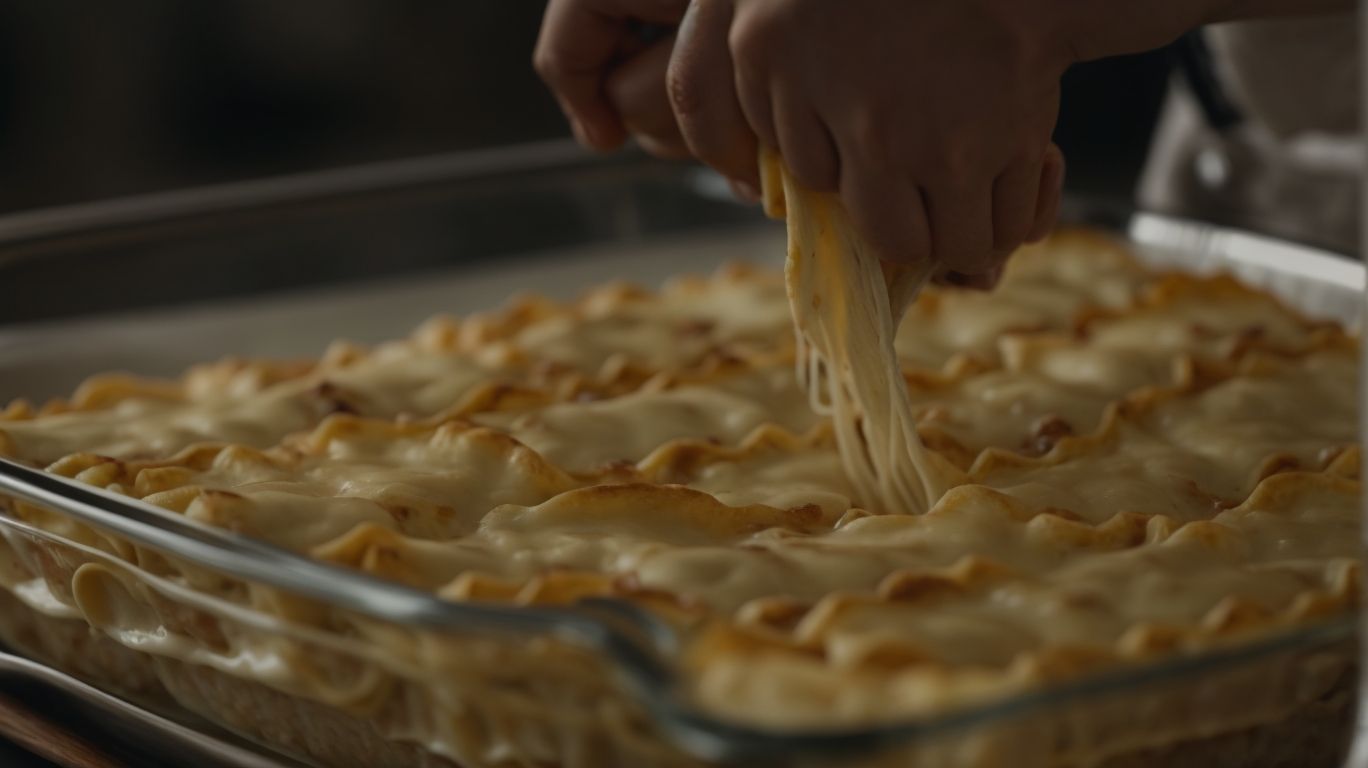
Credits: Poormet.Com – Anthony Walker
Chris Poormet, the award-winning culinary blogger behind Poormet.com, shares his expertise in creating delectable recipes and useful culinary tips inspired by his culinary journey and passion for food photography.
With a creative flair for blending flavors and a keen eye for food presentation, Chris has garnered a dedicated following in the online food community. His journey began as a self-taught cook with a penchant for experimenting with unconventional ingredients and techniques, leading to the development of innovative dishes that captivate the taste buds.
Through his engaging writing style and visually appealing photography, Chris transforms simple ingredients into culinary masterpieces that resonate with home cooks and food enthusiasts alike. His commitment to authenticity and dedication to sharing his culinary expertise have earned him numerous accolades and recognition as a trusted source for gastronomic inspiration.
Frequently Asked Questions
How to Cook Lasagna Noodles Without Boiling?
1. Can I cook lasagna noodles without boiling them first?
Yes, you can cook lasagna noodles without boiling them first. There are a few different methods you can use to achieve perfectly cooked lasagna noodles without the hassle of boiling them.
2. What is the best method for cooking lasagna noodles without boiling?
One of the best ways to cook lasagna noodles without boiling is to use the “no-boil” method. This involves soaking the noodles in hot water for a few minutes before layering them in your dish. This method saves time and produces perfectly cooked noodles.
3. Can I use cold water to soak the lasagna noodles?
No, it is recommended to use hot water to soak the lasagna noodles. This will help them cook evenly and prevent them from sticking together.
4. How long should I soak the lasagna noodles for?
The length of time you should soak the lasagna noodles depends on the brand and type of noodles you are using. Generally, 10-15 minutes is sufficient for most lasagna noodles.
5. Are there any other methods for cooking lasagna noodles without boiling?
Yes, you can also cook lasagna noodles in the oven by adding a little extra sauce or liquid to the dish, covering it with foil, and baking it for about 45 minutes. This method is great for making a one-dish lasagna.
6. Can I use this method for gluten-free lasagna noodles?
Yes, you can use the no-boil method for gluten-free lasagna noodles as well. Just make sure to check the package instructions for any specific cooking recommendations.

